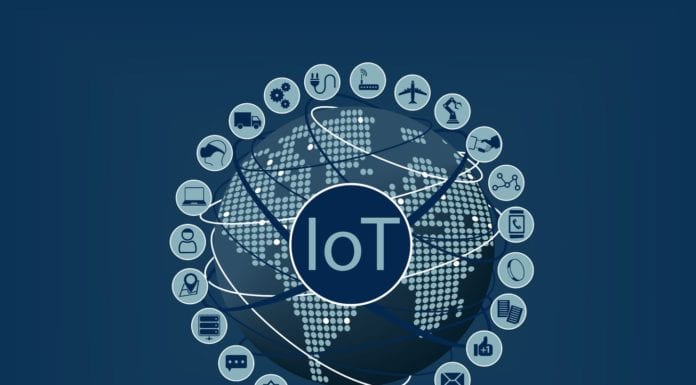The way to think about the business of IoT – the opportunity of it, newly enabled by blockchain-based, crowd-sourced, low-powered IoT networking – is as a virtuous circle, where infrastructure set down to drive operational savings also creates new enterprise revenues. It is akin to the neutral host model for private cellular networks, where an enterprise builds a 5G network for its own ends, and also leases it for partners to use.
With the Helium model, the primary calculation does not have to be just about how marginal private IoT use cases – environmental sensing in cities, room occupancy in buildings, condition monitoring in warehouses, predictive maintenance in factories – will deliver a return on their IoT infrastructure investment. Because by plugging into the global Helium network, and mining HNT crypto credits for IoT traffic across their nodes, these organizations can also capitalize on the biggest IoT use case of them all: logistics. Even before they start earning from their own IoT activity.
This is the new IoT reality for any organization with control of real estate, whether public authorities or private enterprises, just as it has been for everyday residential customers, which have also seized on the opportunity to grow the Helium network – as ‘the people’s network’, to more than 700,000 IoT hotspots worldwide. Helium’s client-hosted IoT network now offers low power wide-area (LPWA) LoRaWAN connectivity in around 52,000 cities in 169 countries.
This kind of global LPWA infrastructure starts to make IoT-based logistics viable for the first time, to deliver a flow of data wherever there is flow of goods, on the back of bikes and trucks, and in the hands of delivery companies. For organizations looking to network their own IoT sensors, to gain insights into their assets and processes, the Helium model presents an opportunity, secured in blockchain, to de-risk their investments, and to bring in new income.
This is especially the case when the model is priced right. Enter Emrit, which is pushing mass Helium deployments for IoT tracking and monitoring in homes and offices, ports and factories, cities and states, and all points between. Emrit is offering ‘enterprise partners’ a share scheme on hardware costs and crypto revenues; split 50/50, straight down the line – and better, actually, as EMRIT heavily subsidizes the cost of the gateways, significatnatly cutting capex outlays.
Subscribe now to get the daily newsletter from RCR Wireless News
The impact for enterprises is substantial, making IoT accessible, scalable, and profitable – with lower deployment costs for basic infrastructure, incremental revenue from passive HNT income, and, crucially, operational efficiencies from all the in-house IoT that becomes affordable and effective.
The alternative, in non-Helium LoRaWAN models, is higher-risk ‘sunk costs’ predicated on parochial IoT cases and marginal IoT gains – multiplied upwards by the complexity of the operating environment and the number of enterprise venues. Even with licensed LPWA infrastructure, attached to a public cellular network, there is no surrogate revenue stream to offset the additional cost of IoT hardware – priced at $20-$200 per sensor, depending on the application.
Which is part of the reason so many enterprise IoT projects have struggled to grow beyond experimental proofs-of-concept. As well as de-risking the IoT opportunity for enterprises, EMRIT is also looking to de-stress the experience, by offering technical support and management software; the latter covers sundry IoT fleet management, plus crypto management for HNT earnings.
There is more besides, in the way of loyalty benefits, referral schemes, and access to the wider Helium ecosystem, to tap into new ideas and technologies. The problem with IoT, historically, suggests EMRIT, is the tech-mechanics are clever but the tech-model is not; the revelation with Helium, it reckons, is effectively to make smarter business of smart business – and to make it accessible to end-users as a shared venture.

